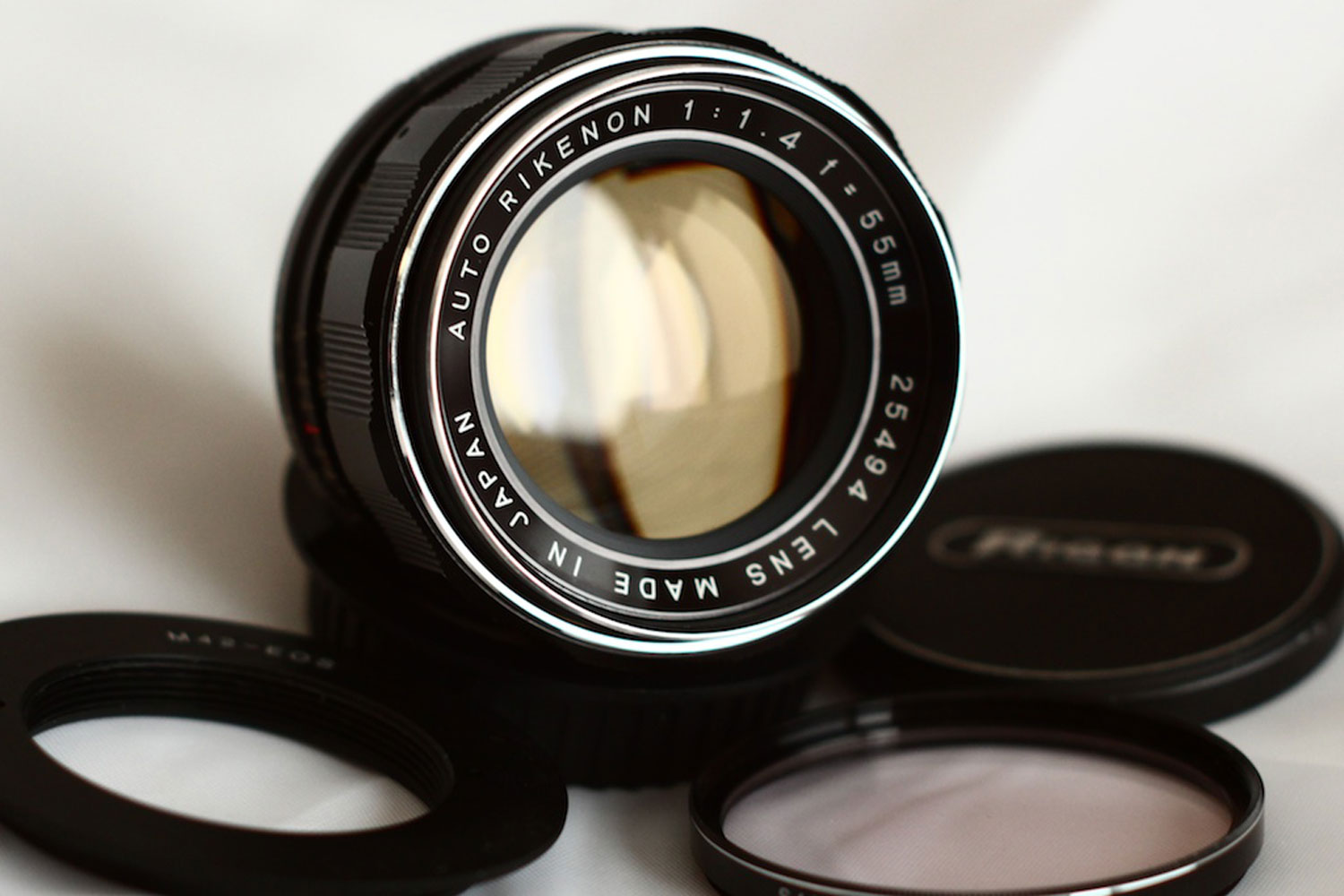5 Cheap Accessories That Improve Your Photography
Photography is a notorious money pit.
Generously, camera manufacturers don’t employ planned obsolescence like our phones or kitchen appliances – the cameras and firmware we buy will hold up for many years. But with advancements in ISO performance, wifi connections, 4K video, and climbing megapixel counts, it’s hard not to blow our savings on the latest and the greatest.
But here’s what new photographers don't always realize: a $50 investment can elevate your image quality more than $5,000 in glass or bodies.
Read on to learn the absolute cheapest ways to improve your photography.
1. Vintage Lenses
Rikenon 55mm f1.4 by Joel Peregrine. (source)
Fast lenses are expensive. The creamy, thin depth of field look is an essential aspect of portrait photographers, but a junky kit lens simply doesn't have the optics to pull off. If your pockets are too light for the modern-day gear, welcome to the world of vintage lenses. Available on places like Etsy and eBay, these old-timey lenses can give you that dreamy, smooth look for pennies on the dollar. The pricing difference can be truly staggering: this 50mm f/1.2 can be found for under $300 dollars. The modern day equivalent is closer to $1300.
Of course, with no image stabilization, autofocus, quality control, or warranty, vintage lenses are a gamble.
But mastering manual focus is easy enough, now that most digital cameras have focus peaking software. Even better, the scuffs, mold, and outdated optics often lend a unique character that will make your photos stand out.
Not sure where to start?
Read our review of the swirly-bokeh Helios 44-4 lens, compatible with Canon, Nikon, Fuji, Sony, and more.Try replicating that with a modern lens!
2. Lighting: 3rd Party Flashes, Remote Triggers, Diffusers, and Reflectors
Canon 244T Speedlite by Seth Doyle. (source)
Your camera bag simply isn’t complete without some sort of flash and modifier.
The $60 Yongnuo YN 560 II delivers the best bang for your buck by a mile. It's powerful enough to balance out the shadows in broad daylight! Surprisingly, the small Chinese company's quality control is above-par, with very few negative reviews about defective products.
But think even bigger: what if you could take that flash gun off-camera, and position it anywhere you'd like? The $29 Yongnuo remote triggers allow you to fire your flashes remotely, giving you absolute creative control of your lighting. Pair this combo with some diffusers or umbrellas and you've got yourself a professional, mobile studio lighting kit for under $200.
Disregard the expensive bundles you'll find on Amazon – here's a full breakdown of everything part you need to set up a professional light studio on a budget:
Consider this $57 flash, this $29 remote trigger, this $21 reflector, this $17 umbrella, this $9 flash and umbrella mount, and this $18 light stand.
3. VSCO plugins
VSCO presents in Lightroom. Photo taken with a Sigma DP2 Merrill.
Controversially, VSCO has established itself as the definitive “look” of photography’s modern era. For those not in the know, the VSCO Lightroom plugin is a carefully programmed LUT (or ‘look up table’) that takes digital colors and converts them to a filmic, analog equivalent.
With a fitting VSCO film emulation, your sterile blue skies will deepen. Your garish greens become rich and velvety. Portraits can feel warm and nostalgic, and street photos achieve a level of gritty realness that you’d be hard pressed to create yourself.
To be fair, It’s not a perfect replication, as film fanatics will be quick to tell you. It’s also a very ubiquitous look, so the best way to stand out is to think of the emulations as a starting point – editing the colors and contrast to your liking from there.
4. DIY Visual Tricks
Photo by Sam Hurd. (source)
Put on your photographer's hat and take a look around you. Take stock of your everyday office or home furnishings. Every object has a certain spectral value: when light passes hits the object, is it opaque or transparent? Does it bend or redirect the light? Does it color the light? Sunglasses, sheets, cutlery, and even the light emitting from your laptop or cell phone can be strategic additions to a photograph.
For example: a clever photographer can turn a natural light portrait of a woman holding up a glass of cabernet in to an explosion of glowing red light and gorgeous reflections dancing all around the room. Throw in some aluminum foil just out of frame to bounce the light, and you've added a stunning catchlight to her eye.
More niche items like colored smoke bombs, plexiglass, or cellophane are all available on Amazon. You might even consider picking up a glass prism to create mirrored subjects, rainbow-colored chromatic aberration, or vintage light leaks.
Check out this $14 glass prism, $7 bolt of lace, and $12 pack of tinted plastic gels.
5. Model Mayhem
Photo by Isi Akahome. (source)
Experience is the best teacher. Craigslist, Facebook groups, or sites like Model Mayhem, the Myspace-era social network for photographers and models looking to collaborate, can connect you to many models who will shoot for TFP (trade for print – in other words, all they want are the photos for their portfolio). Slightly more experienced models may command a small fee, but this investment is well worth it.
Although technically not an accessory, a seasoned model can help you learn how to pose and direct a subject – knowledge you can take to your next paid gig to deliver stunning results. Photography is all about learning by doing, and the lessons you learn from these professionals can be an invaluable addition to your skill set.
Did we miss any cheap accessories that have improved your photography? Sound off below, and we'll include your comment – and Instagram handle – in our updated version of this post.











